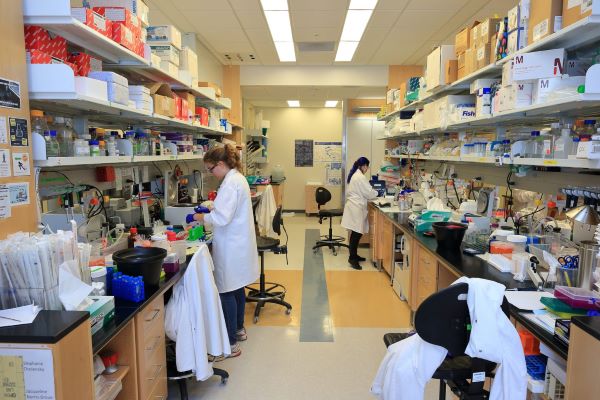Veronica Correa
October 1, 2019
 (Photo courtesy of Stephen Frye)
(Photo courtesy of Stephen Frye)
A group of researchers from the University of North Carolina at Chapel Hill are part of a new research proposal to create chemical and biological tools to explore novel molecular targets related to Alzheimer’s disease.
The proposal, which was submitted through the NIH National Institute on Aging, aims to create new chemical probes to validate therapeutic targets for Alzheimer’s, which has no known cure, and very few treatments. The project was awarded $37.5 million for five years. Emory University is the leader on the proposal, which is a collaboration between five institutions including UNC. The grant will establish the Open-AD Drug Discovery Center to advance Alzheimer’s treatment. Open-AD will develop a suite of target enabling tools including high quality antibodies and chemical probes, and openly disseminate all data, methods and reagents to any interested academic and/or commercial investigator to accelerate validation of novel drug targets and to seed new drug discovery efforts.
The UNC team, which is focused on medicinal chemistry, includes Stephen Frye, Ph.D., Director of the Center for Integrative Chemical Biology and Drug Discovery (CICBDD), and research assistant professors Alison Axtman, Ph.D. and Kevin Frankowski, Ph.D. Frye will be the Principal Investigator on the UNC end, while Frankowski and Axtman will be co-investigators in medicinal chemistry. Other UNC contributors include:
- Jeff Aubé, Ph.D., Co-Investigator, Medicinal Chemistry
- Dmitri Kireev, Ph.D., Co-Investigator, Computational Chemistry
- Xiaodong Wang, Ph.D., Co-Investigator, Medicinal Chemistry
- Kenneth Pearce, Ph.D., Co-Investigator, Lead Discovery, Characterization and Project Manager
- Brian Hardy, Compound and Laboratory Manager, Lead Discovery and Characterization
- Mike Stashko, B.S., Research Associate, Lead Discovery and Characterization
- Tim Willson, Ph.D., Co-Investigator, Medicinal Chemistry
- Carrow Wells, B.S., Research Associate, Medicinal Chemistry
Other participating institutions include the Structural Genomics Consortium (SGC) at the University of Oxford, Stanford University, and Sage Bionetworks in Seattle. Each group will focus on a specific part of the drug/probe discovery process, such as structural biology, bioinformatics, or assay development and high-throughput screening. The initiation of this NIH project is also contributing to a key UNC objective to increase its research involvement in neuroscience.
Frankowski said the project was an opportunity to work with renowned experts in Alzheimer’s research who have contributed to new theories of disease etiology and potential intervention points. A key challenge he mentioned in progressing this research is finding chemical probes that can penetrate the blood-brain barrier to reach targets in the central nervous system. The National Institute of Aging has previously funded the Accelerating Medicines Partnership-Alzheimer’s Disease (AMP-AD), which has provided more than 500 new candidate targets for Alzheimer’s disease, and these targets serve as the foundation for Open-AD focused on pharmacologic validation and drug discovery.
“However, despite years of research and looking into it, we don’t understand the fundamental causes for Alzheimer’s disease,” Frankowski said. The UNC effort will test disease hypotheses with chemical probes which can confirm or reject novel targets’ role in AD, and if confirmed, form the basis for discovery of new drugs.
The project will also follow an open drug discovery methodology. Axtman said lab notebooks and chemical probes will be released so others can access new discoveries. Following this approach, Open-AD will test the overarching hypothesis that open drug discovery will accelerate the development of AD medicines by catalyzing robust experimental evaluation of a series of complementary therapeutic hypotheses
